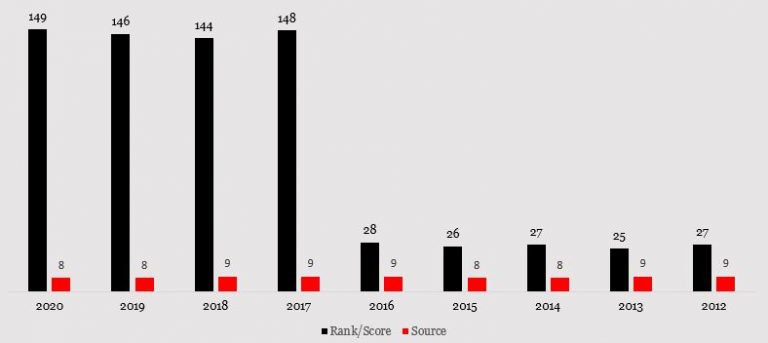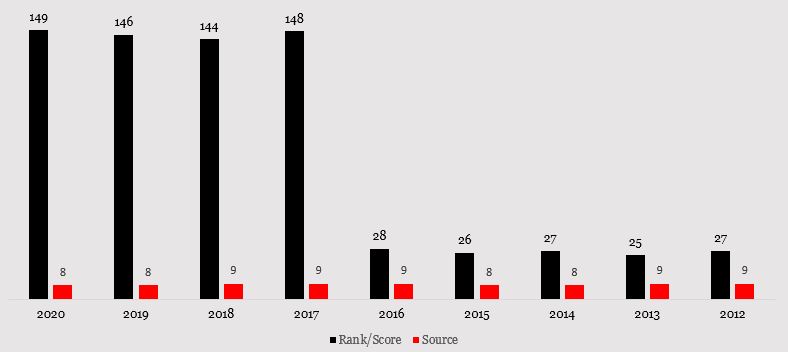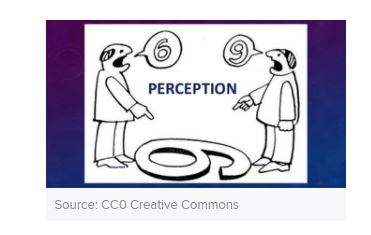
Having quarterly or yearly reports from the national, regional and global think tanks about socioeconomic and political developments in countries has never been a problem. However, the problem lies with the authenticity of the reports. Political leaders and social actors in developing countries are quick to reject some of the reports on credibility issues. The reports have also been rejected on the premise that they were produced in the developed world. Hence, the reports in the clime cannot adequately project the realities in the developing world.
The Transparency International is one of the global think tanks that has consistently produced Global Corruption Perceptions Index. Like other reports or indexes, the GCPI has been criticised and still been doubted by a number of people, organisations and countries in the world. Since 2012, the best position attained by Nigeria was 144 out of over 180 countries [when ranking approach was used]. When score approach was employed, Nigeria only better with 28 points. In both approaches, the country has consistently been positioned as one of the most corrupt countries in the world.
This has continued to receive mixed reactions from the stakeholders in the Nigerian project. Whenever the index is released, the Presidency does not hesitate to pick holes in the index. This year the TI released the latest index, which positions Nigeria as 149th for the 2020 assessment against 146th attained in 2019. This is not augur well for the Presidency as the spokesperson to President Muhammadu Buhari, Garba Shehu notes that “reality is based on verifiable facts and data. And any evidence-based analysis would prove that whether it is by prevention or punitive measures in recoveries and prosecution, this administration would be rising fast up these rankings rather than standing still.
Register for Tekedia Mini-MBA edition 18 (Sep 15 – Dec 6, 2025) today for early bird discounts. Do annual for access to Blucera.com.
Tekedia AI in Business Masterclass opens registrations.
Join Tekedia Capital Syndicate and co-invest in great global startups.
Register for Tekedia AI Lab: From Technical Design to Deployment.
“Organizations should be factual in their analysis and be prepared to rely on inputs outside of sensational media reports and age-old narratives which have not been updated to reflect today’s reality in Nigeria concerning its globally-respected war on corruption.”
Some social commentators and public affairs analysts believe that the outcome meets the reality despite the presidency’s claims. As the presidency queries credibility of the index and research methodology used by the body, in our experience, some citizens on digital sphere and in physical space are also asking about the link between perception and reality. The argument has been that report or index that uses perception to measure reality cannot be credible. These narratives are examined by our analyst using academic and applied lenses. The piece seeks to draw insights from both lenses and pinpoint them within the context of ongoing conversation around acceptability of the index or not.
http://https://www.youtube.com/watch?v=do4yQe8XxQw
Exhibit 1: Nigeria’s Status (2012-2020)

Thoughts Behind Perception
In academic and applied researches, concepts and constructs are key to better understanding of the problems being addressed by researchers. These should be well delineated within the context of the problems. Perception as a concept has been defined by numerous academic scholars, especially psychologists, sociologists, political scientists and communication specialists. Generally, perception “is the organization, identification, and interpretation of sensory information in order to represent and understand the presented information or environment.” It has also been described as awareness, comprehension or an understanding of something.
Taking these definitions into the real world, one can say the concept is key to our understanding of people, objects around us and reacting to experiences that emanate from interacting with them consciously or unconsciously. However, to some scholars, perception is not reality. It can only influence consciousness of things [human and objects] around us [see Exhibit 2]. Therefore, outcomes of researches that leveraged perception as a concept need to be interpreted and used with caution.
Exhibit 2: Perception

Theories Behind Perception
Apart from understanding perception conceptually, a research that uses it must also apply propositions or assumptions of theories that align with it. There are many theories of perception. In most cases, cognitive and constructive theories have been used by researchers, at least in the last two decades in the academic community. Cognitive theories have consistently stressed ‘poverty of stimulus’ as a construct that becloud people in understanding reality. In specific terms, the construct denies people opportunity of providing a unique description of the world.
Meanwhile, action-based theories of perception seem to solve this lacuna with the provision of constructs, assumptions and propositions that enable people to see perception from input and output perspectives. This is largely determined by examining interaction with processes that lead to seeing objects or people in positive and negative lenses. In other words, perceptions should start from the general to the specific details of the people or objects.
Revisiting Transparency International’s Methodology
While defending its methodology, the Transparency International notes that “in order to carry out this quality assurance process, Transparency International reaches out to each one of the institutions providing data in order to verify the methodology used to generate their scores. Since some of the sources are not publicly available, Transparency International also requests permission to publish the rescaled scores from each source alongside the composite CPI score. Transparency International is, however, not permitted to share the original scores given by private sources with the general public.
Each of the sources included in the CPI is standardised to allow for the aggregation into the CPI score. The standardisation converts all the data points to a scale of 0- 100 where a 0 represents the highest level of perceived corruption, and 100 the lowest level of perceived corruption. While most of the underlying CPI sources are also coded in the same direction (with lower scores indicating higher levels of perceived corruption), four sources are scaled the opposite way, i.e. with lower scores denoting lower levels of corruption. For comparability purposes, these four sources are reversed by multiplying every score by -1.”
In this defense, there are issues that need attention. It is clear that the body has closed culture of sources. This is not bad since it is ethical to protect the sources. However, the think tank needs to revisit its methodology. If some sources are expected to be protected, those that do not require the agreement should be used. This is imperative when one looks at the body’s strategic principle and name [The Transparency International], and the insights that emerged from the concept and theories examined earlier. It is also essential that the body considers the outcomes of anti-corruption policies and instruments being used by each economy in its quantification of corruption issues.



